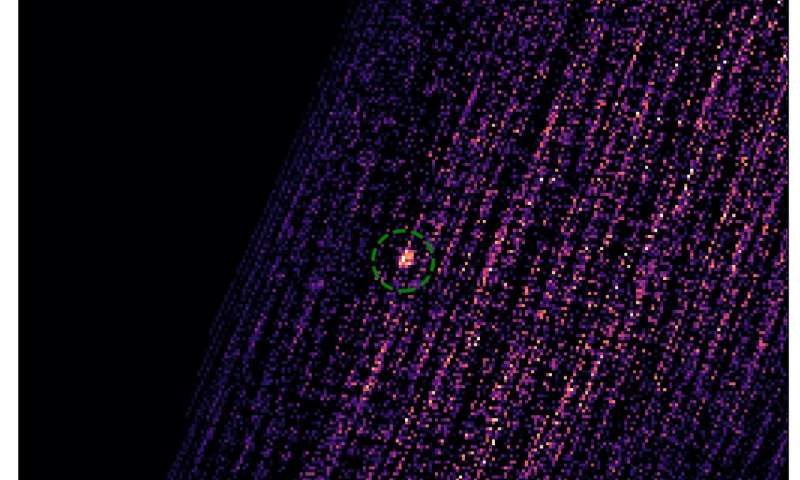Here we have several link sent in by Gary. At www.newscientist.com/article/2235312-chinas-rover-has-discovered-what-li… … China's rover vehicle has been peering into the far side of the Moon – going down as deep as 40m by using ground penetrating radar. The top layer consists mostly of fine dust – or regolith. Between 12 and 24m deep the soil is coarse with large rocks embedded in it (stones to you and me) and between 24 and 40m deep it is composed of alternating layers of coarse and fine soil. Hence, the rocky part of the Moon is even deeper and most of what has been recorded is due to incessant meteorite bombardment and the shifting of regolith by the solar wind or interactions with the Earth's magnetic field. Obviously, a deeper bore hole is required to find some interesting geology.
At https://phys.org/news/2020-03-osiris-rex-students-unexpected-glimpse-bla… … students and researchers working on a NASA mission orbiting a near earth asteroid, Bennu, also took images of something in the background. It is said that it was an active black hole …
 … but make of it what you will.
… but make of it what you will.
At www.dailymail.co.uk/sciencetech/article-8066441/ … iron in Earth's oceans one billion years ago was so great it almost starved our world of oxygen and inhibited the chance of complex life forming ….
At www.dailymail.co.uk/sciencetech/article-8066051/ … we learn Earth was a water world 3.2 billion years ago. There was no dry land. It was just water from one side of the globe to the other. This is when primitive microbes were emerging it would seem, per mainstream theory. This tory comes from Nature Geoscience so it should have some credence. It derives from an analysis of rocks in NW Australia. Hence, we have the fossilised remains of a hydrothermal vent – thought by mainstream to be the point where life began (in a primordial soup beneath the waves). Do hydrothermal vents have to be under the sea? What they found was not water – but rocks that are thought to have been saturated by sea water. They took a hundred samples – which is representative of serious research. Not a fly by night. They were looking in particular for evidence of oxygen trapped in rock – oxygen 16 and 18. Yet, a couple of billion years later oxygen was in short supply. What was going on?
